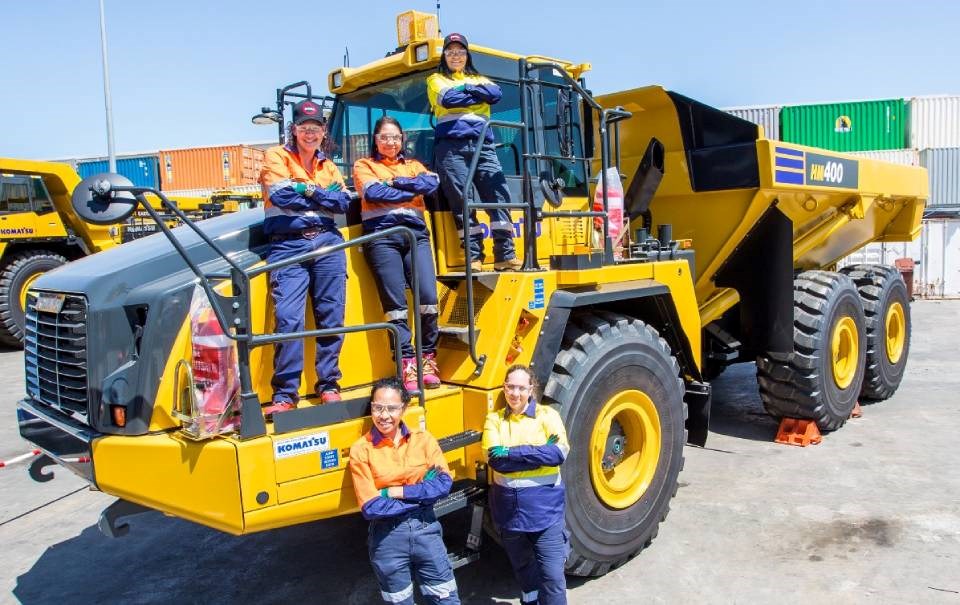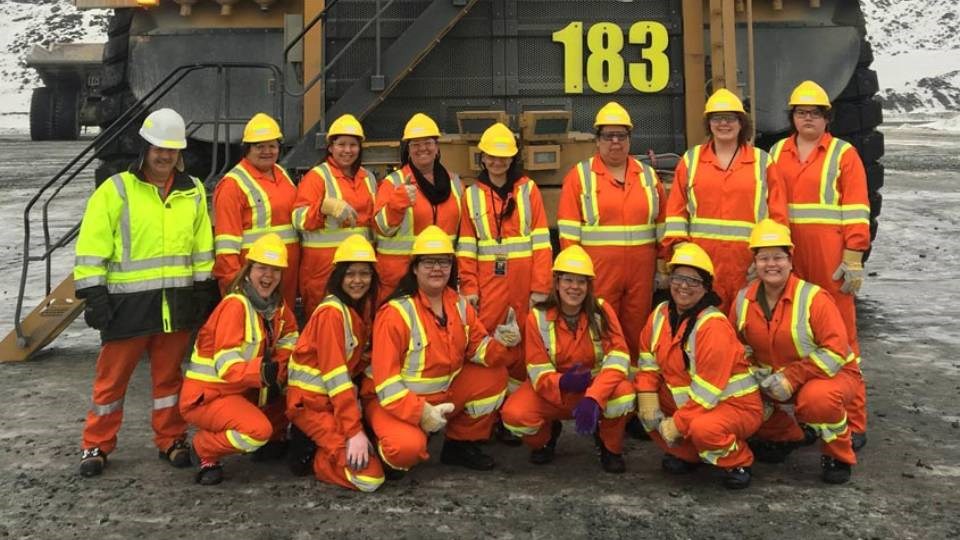When it was founded in 1997, the Aboriginal Women in Mining program had a simple goal: provide Indigenous women in northeastern Ontario with pre-employment training to help them enter the mining sector.
At the time, Indigenous hiring policies and quotas were uncommon, explained Kathy Lajeunesse, and many Indigenous women were being shut out of the work opportunities that were cropping up at mine projects in and around the North.
“Colonialism was and still is the lay of the land and it’s created systemic barriers and issues for Indigenous women, especially in mining,” said Lajeunesse, the partnership liaison with Keepers of the Circle, the program’s parent organization, during an online talk on May 18.
Since those early days, the program has rebranded — it’s now the Culture, Confidence and Competence, or Triple C, program — and expanded its mandate to prepare women for work in green construction, clean energy, food and agriculture.
The culturally based, eight-week program guides participants in career exploration, personal skill development, health and wellness, professional skill development, and sector-specific training.
Through its long-time partnership with Agnico Eagle’s Detour Lake gold mine, participants can complete a 20-week work placement, in different areas of the mine, and get a job upon completion.
At the mine site, participants have access to safe camp buildings and sports and recreation facilities, and there is ample opportunity to fish nearby. Indigenous participants are given time off to participate in traditional hunts, and there’s a team of Indigenous advisors on hand to guide the company on best practices that are more inclusive of Indigenous workers.
“Up at Detour Lake, they’ve done a very good job working with the Indigenous communities they have IBAs (impact benefit agreements) with,” Lajeunesse said.
“And so there has been some real attention paid to making sure that the Indigenous peoples from the communities that have an IBA, that are going off to Detour Lake gold mine, can have a good experience while they are there and want to return.”
Lajeunesse shared her experience during a May 18 online panel hosted by Women in Mining UK that examined the challenges and opportunities for Indigenous women working in the industry around the globe.
Tackling outdated cultural beliefs
In South Africa, there’s an ongoing struggle to push back against long-held cultural beliefs and practices that have impeded women from entering the sector.
Murendeni Makhado, the membership lead for Women in Mining South Africa (WiMSA), said in most African cultures, women are raised to understand they should lower their gaze when speaking to men. And yet in mining, avoiding eye contact can be seen as lack of confidence or knowledge. It’s an issue that can be especially pronounced for Indigenous women.
“As we know, different people of different cultures are raised in different ways,” Makhado said. “You’ve got different practices; you’ve got different languages. Those, in some ways, become a barrier when you get to the mining industry.”
Women have also had to fight against the perception they’re not strong enough to perform on the job, because the sector has always been seen as physically demanding, she added. That’s why technology can be a “game-changer” for women, since it creates a more level playing field.
But education and building awareness is important, too, both for younger generations of Indigenous women looking to get into the sector, and for the companies that will be hiring them.
“Most of these judgments are made unconsciously,” Makhado said. “It’s something that’s in-built because of how we were raised, because of how we understand the culture of the industry.”

Beyond the mine workers, there’s a need for Indigenous women to participate at the decision-making level, the panel heard.
Lana Eagle, a senior advisor and consultant in British Columbia, sits on two corporate boards as well as boards for the Prospectors and Developers Association of Canada (PDAC) and Geoscience BC.
“I think we’re at a time, especially here in Canada, where we’re beginning to regard the importance of an Indigenous viewpoint at the board level,” Eagle said.
“And I can say that, honestly, my experience so far has been very, very good in the sense that I am respected.”
Eagle believes much of this new insight comes from the discovery in recent years of hundreds of graves of Indigenous children who died while at residential schools across Canada.
Though Eagle believes there was previously an “academic understanding” of the horrific toll the residential school system had on Indigenous communities across the country, the uncovering of children’s graves “really woke up a lot of Canadians, and now there is this wanting to understand better the plight of Indigenous peoples in Canada.”
Much of this can be achieved through education and awareness training, which comes at a financial cost for the companies, but could be invaluable in creating understanding throughout the organization, she added.
Eagle spoke highly of her experience joining the board at Kodiak Copper, a B.C.-based exploration company searching for copper porphyry in B.C. and Arizona.
Wanting to be more inclusive in its operations, the company reached out to TMX for a recommendation of an Indigenous representative that might sit on their board. They approached Eagle with respect and an “openness of heart,” which has resulted in a “great journey so far,” she said.
“For a company to be a company that really is diversified and really respects its Indigenous people and/or Black people, I think it requires courage, and it also requires intentionality,” she said.
“There are some things a company will have to be very intentional about before they move in that direction.”
Creating a future for women in mining
Florence Drummond said a similar awakening around Indigenous engagement has taken place in Australia.
In 2020, there was broad public outcry when Rio Tinto destroyed rock shelters in the Juukan Gorge while expanding its Brockman iron ore mine in the Pilbara region of Western Australia.
The rock shelters were culturally significant to the Puutu Kunti Kurrama and Pinikura peoples of the area, as they hosted evidence of 46,000 years of continuous human occupation.
People unfamiliar with the industry don’t always fully understand the importance of mining in everyday life, Drummond said.
But the incident at Jukkan Gorge “really opened people’s eyes about what’s really happening” in the industry, said Drummond, who cofounded Indigenous Women in Mining and Resources Australia (IWIMRA) in 2017.
Helping Indigenous women feel included in mining, and making them part of the ongoing conversation around the sector, is a driving force behind IWIMRA.
This year, hundreds of Indigenous women working in Australia’s mining sector will gather in Perth for an inaugural meeting hosted by the organization.
Drummond said it will give Indigenous women a novel opportunity to discuss how they fit into the sector, what drives them, and what their roles will be in the future.
“This collective data, I don’t believe has been attempted before,” she said.
“So this can really be a baseline, certainly for us here in Australia, and of course we would love to invite all other Indigenous women and people to the conversation to really have a global snapshot for one of the very first times on where we can start together as an industry.”




